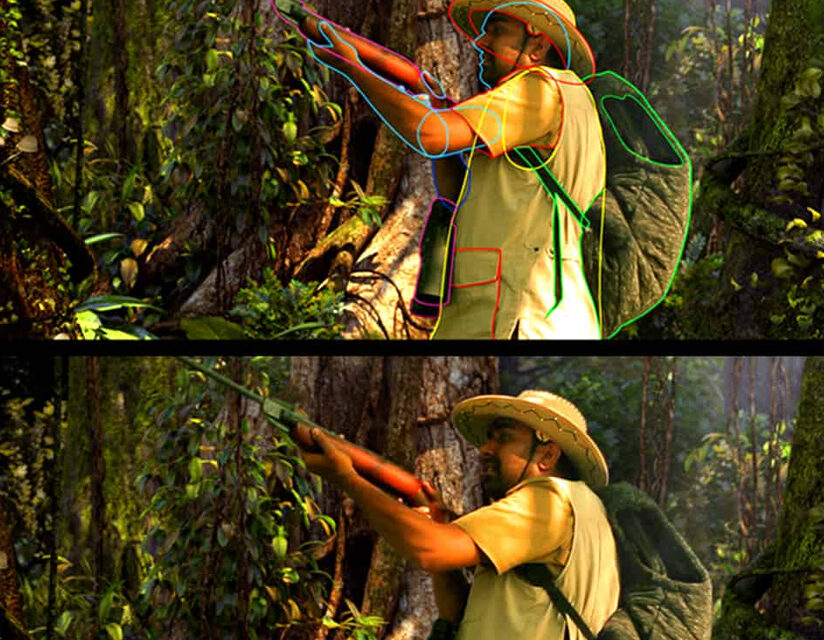Rotoscoping Services
Rotoscoping is the process of tracing over a live-action video frame by frame. The animator will be able to produce incredibly lifelike gestures by tracking the character in the scene; this method is fairly comparable to the motion capture methods we use today. Rotoscoping is a technique for converting live-action videos into animation or for enhancing already-existing videos with special effects. The live-action video is covered with a variety of still photos, which are then placed over a background movement track to create an animated scene.
Rays 3D is one of the top pioneers of worldwide rotoscope and visual effects services. Our group of artists are performers at heart and achievers by nature. They treat each project as an individual and give their 100% to execute it effectively. We are determined to give top priority to the needs and expectations of the client. Come and work with us as we are dedicated to being a part of your project’s fantastic adventure.

Rotoscoping has been used in a variety of ways to realize a filmmaker's vision.
For Reference Rotoscoping
When Walt Disney adopted the technique for his company, he gained a new perspective on this computer-generated artwork. Disney didn’t simply trace over a character’s movements; instead, it used the live-action movie to get a sense of it. It can be seen in a number of Disney films, including the first totally animated film from the studio, “Snow White and the Seven Dwarfs.” Prince Charming’s movements and other dance sequences in the film were rotoscoped from the actual video.
Partial Rotoscoping
The idea of Rotoscoping has been embraced throughout time by numerous VFX teams and animators, who commonly use it to flexibly apply it to varied animated materials. Animators may use caricatures to improve live-action footage while rotoscoping a human-like animation, for example, to emphasize the variations in size between animated characters and real-life humans. This could preserve the cartoon’s aesthetic while resulting in more convincing movement.
What Services You Get from Rays3D
Rotoscoping Studio ?
- Gain access to our vast database of highly qualified visual effects artists.
- Hire VFX designers that can swiftly grasp your demands and provide what you need.
- Hire experts that will stick to the deadlines and complete assignments on time.
- Get access to the most up-to-date technology and keep up with new trends.
- Delivering customized video solutions is a specialty of our VFX animators. Get compelling visual effects and top-notch animation for your audience.
© 2022 All Rights Reserved. | Rays3d.net (A Division of Brainwire Technologies Pvt Ltd)
